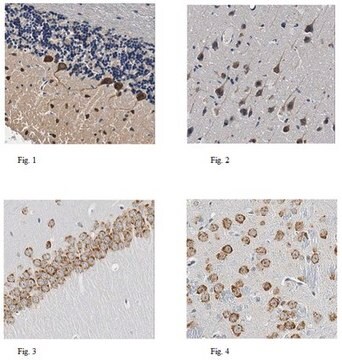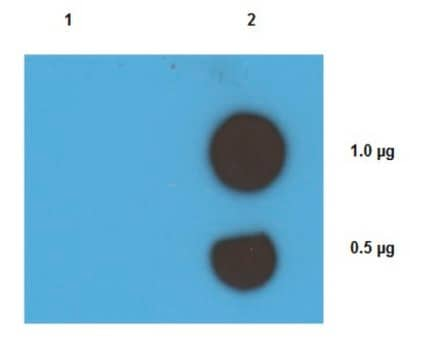MAB5266
Anti-Neurofilament 200 kDa Antibody, clone N52
clone N52, Chemicon®, from mouse
Synonym(s):
Anti-CMT2CC, Anti-NFH
About This Item
Recommended Products
biological source
mouse
Quality Level
100
300
antibody form
purified immunoglobulin
antibody product type
primary antibodies
clone
N52, monoclonal
species reactivity
human, mouse, monkey, rat, pig
manufacturer/tradename
Chemicon®
technique(s)
immunohistochemistry: suitable
western blot: suitable
isotype
IgG1
NCBI accession no.
UniProt accession no.
shipped in
wet ice
target post-translational modification
unmodified
Gene Information
human ... NEFH(4744)
mouse ... Nefh(380684)
pig ... Nefh(100156492)
rat ... Nefh(24587)
rhesus monkey ... Nefh(717705)
General description
Specificity
Immunogen
Application
Neuroscience
Neurofilament & Neuron Metabolism
Neuronal & Glial Markers
Immunohistochemistry: 5-10 μg/mL
Optimal working dilutions must be determined by end user.
Immunohistochemistry: Antibody N52 reacts with a fragment of NF-200 side-arm that is located at the end of the MPR KSP domain and which contains the consensus cdk-5 phosphorylation site, however this reactivity is abolished if the NF-200 fragment becomes phosphorylated by cdk-5 {Guidato et al, 1996}. Thus for the fullest staining and reactivity, including westerns, it is suggested that samples be treated with alkaline phosphatase prior to antibody staining. The following treatment protocol is suggested:
ProtocolPreparation of Solutions:
I. TBS: Tris-HCl, 0.1 mol/l; NaCl, 0.1 mol/l′ pH 8.0.
II. Mix alkaline phosphatase, 1 mg/ml with 1 mol/l ZnSO4,; 1mol/l MgCl2, and 1mmol/l PMSF; and dissove in TBS.
NOTE: It is necessary to dialyze the alkaline phosphatase against solution I before use.
Procedure:
Frozen sections from shock frozen tissue samples are air-dried and then fixed with acetone for 10 min at -20°C. The excess acetone is allowed to evaporate at room temperature. Incubate the sections in solutions II for 4 hours at +30oC and wash in TBS 3 times for 5 minutes each. Negative control sections are incubated in solution II with out alkaline phosphatase. Further treatment as follows:
- Cover the preparation with 10-20 μl antibody solution and incubate for 1 hr in a humid chamber.
- Immerse the slide in TBS and wash in TBS 3 times for 5 minutes each.
- Cover the preparation with 10-20 μl of a solution of anti-mouse Ig-antibody, labeled with fluorscine isothiocyanate, and incubate in a humid chamber at 37°C for 1 hour.
- Wash the slide in TBS 3 times for 5 min each.
Physical form
Storage and Stability
Other Notes
Legal Information
Disclaimer
Not finding the right product?
Try our Product Selector Tool.
recommended
Storage Class Code
10 - Combustible liquids
WGK
WGK 2
Flash Point(F)
Not applicable
Flash Point(C)
Not applicable
Certificates of Analysis (COA)
Search for Certificates of Analysis (COA) by entering the products Lot/Batch Number. Lot and Batch Numbers can be found on a product’s label following the words ‘Lot’ or ‘Batch’.
Already Own This Product?
Find documentation for the products that you have recently purchased in the Document Library.
Customers Also Viewed
Our team of scientists has experience in all areas of research including Life Science, Material Science, Chemical Synthesis, Chromatography, Analytical and many others.
Contact Technical Service








